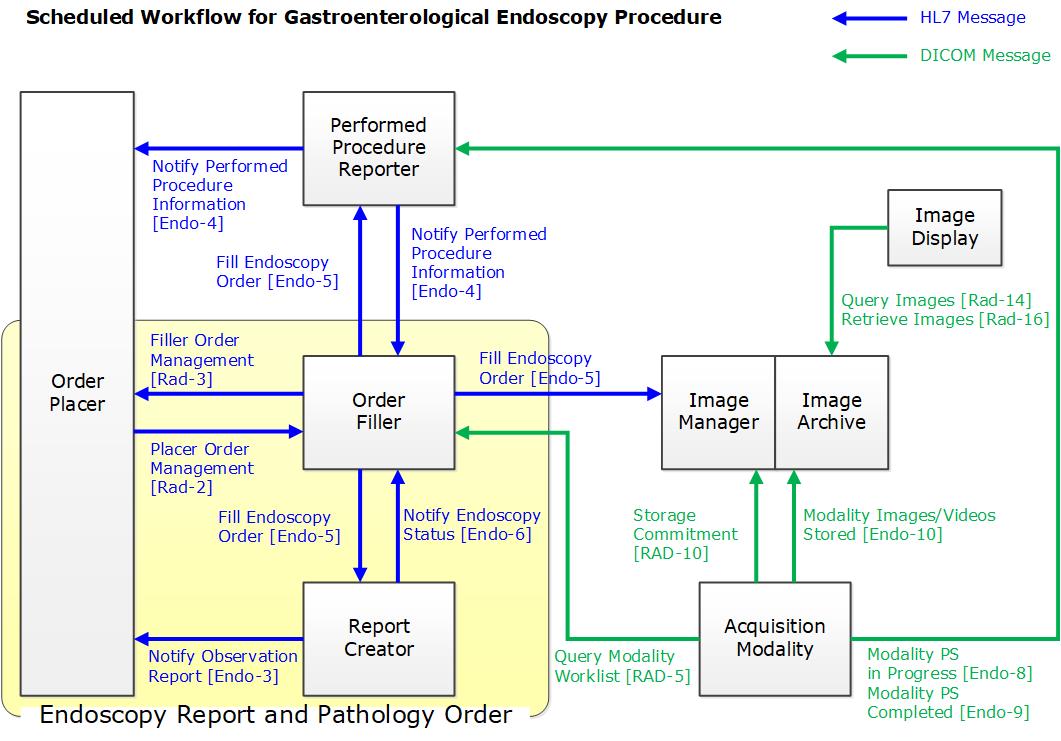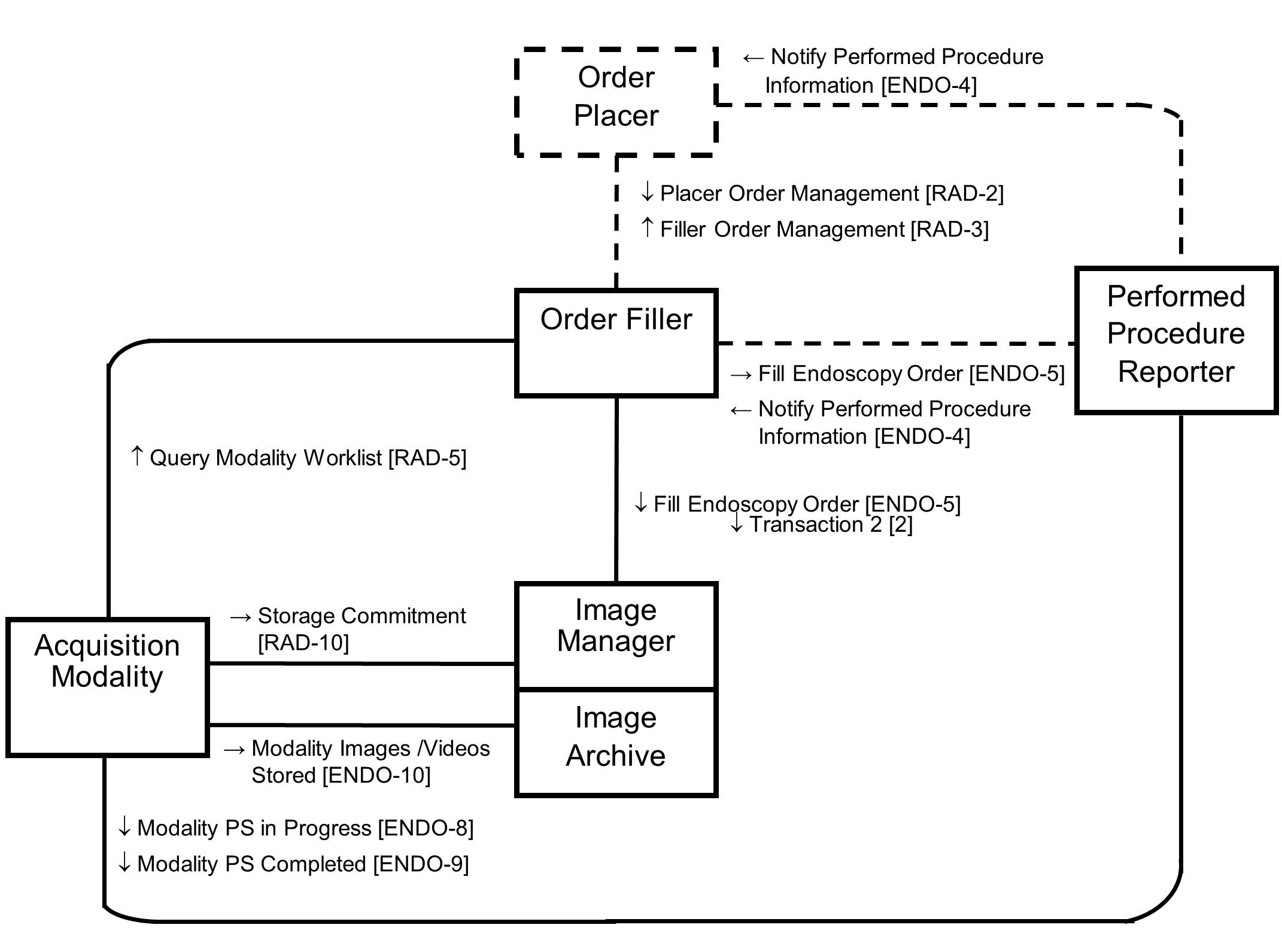Difference between revisions of "Endoscopy Report and Pathology Order"
(adding content for the ERPO wiki page) |
(→Summary: added an image) |
||
| Line 7: | Line 7: | ||
The Endoscopy Report and Pathology Order (ERPO) workflow specifies a series of workflows where gastroenterological endoscopy is conducted on the order from the hospital information system located outside of the endoscopy department and the endoscopy report returned to the system. | The Endoscopy Report and Pathology Order (ERPO) workflow specifies a series of workflows where gastroenterological endoscopy is conducted on the order from the hospital information system located outside of the endoscopy department and the endoscopy report returned to the system. | ||
| − | [[Image: | + | [[Image:ERPO_Profiles_Wiki_Page_Image1.jpg|750px]] |
==Benefits== | ==Benefits== | ||
Revision as of 11:30, 7 December 2021
The Endoscopy Report and Pathology Order (ERPO) workflow specifies a series of workflows where gastroenterological endoscopy is conducted on the order from the hospital information system located outside of the endoscopy department and the endoscopy report returned to the system.
Summary
The Endoscopy Report and Pathology Order (ERPO) workflow specifies a series of workflows where gastroenterological endoscopy is conducted on the order from the hospital information system located outside of the endoscopy department and the endoscopy report returned to the system.
Benefits
Reduce Errors and Enhance Patient Care
- Prevents manual data entry errors by ensuring that a particular piece of data is entered only once.
- Prevents delays in patient care by making relevant information available at the point of care.
Improve Throughput
- Saves manual data entry time by ensuring that a particular piece of data is entered only once.
Reduce Deployment Cost/Time
- Prevents custom interface specification time and expense.
- Prevents custom interface implementation time and expense.
- Reduces interface compliance testing time and expense.
- Reduces intersystem testing time and expense.
- Reduces custom interface maintenance time and expense by maintaining a single interface (IHE) instead of multiple custom interfaces.
Details
The most typical use case involves an endoscopy procedure being ordered, scheduled and performed for a registered patient.
The endoscopy order is scheduled and then the endoscopy procedure is performed, with imaging data being produced and status messages communicated to interested systems.
This case covers both inpatient and outpatient procedures. The patient may be new or known to the current healthcare facility.
Systems Affected
Systems involved in this profile are:
- Endoscopy departmental information systems that manage department scheduling (e.g., Endoscopy Information System (EIS))
- Performed Procedure Reporter that receives information from the Acquisition Modality and links it with the Requested Procedure and Scheduled Procedure Step
- Endoscopy image management/archiving (e.g., Picture Archiving and Communication System (PACS))
- Acquisition modalities
Specification
Profile Status: Trial Implementation
Documents:
Underlying Standards:
See Also
IHE Radiology Technical Framework

